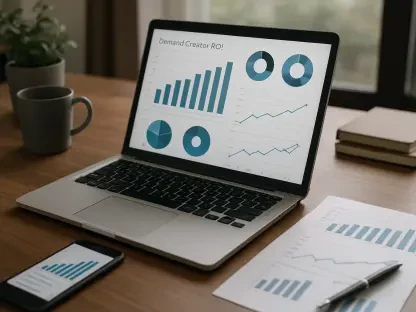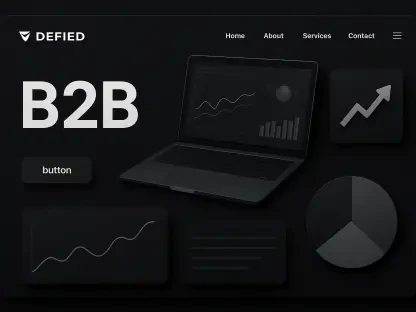Email marketing remains an indispensable tool for B2B marketers aiming to connect with their target audience, nurture leads, and drive conversions. In today’s overcrowded inbox environment, standing out requires a strategic approach. Here’s how B2B email marketing can be optimized to boost engagement and conversions in 2024.
Personalization and Segmentation
Crafting Tailored Messages
Personalization is at the forefront of effective B2B email marketing. B2B buyers expect communications that speak directly to their needs and interests. By segmenting email lists into categories such as industry, company size, role, and past interactions, marketers can deliver targeted content that resonates with each recipient. Customizing messages in this manner not only improves relevance but also increases engagement, making recipients more likely to respond positively. Enhanced engagement is often observed as the recipients feel that the communications address their specific interests and requirements. This improves not only open rates but also click-through rates, thus driving more conversions.
Segmentation enables companies to focus their marketing efforts on different groups according to certain characteristics. For example, a large enterprise may find value in case studies showcasing how similar companies benefited from a product, whereas a small business may prefer actionable insights on optimizing their limited resources. Such specific targeting ensures that every segment receives the type of content that effectively captures their attention and meets their unique needs. By understanding and catering to these differing needs, marketers can ensure that their communications remain relevant and beneficial.
Leveraging Dynamic Content
Employing dynamic content and merge tags allows for further customization within emails. This means personalizing elements such as subject lines, greetings, and the email body text to match each segment’s preferences. Transforming generic messages into engaging communications requires attention to individual recipient details, which can significantly boost open and click-through rates. Such differentiation is achieved by leveraging information collected during the segmentation phase, integrating this data into individual emails through dynamic content features. The effort to personalize communications down to the recipient’s name or past interaction history can lead to a more engaging and memorable experience, fostering stronger connections.
Creating dynamic content isn’t just about inserting names or companies; it’s about understanding what resonates with each group and tailoring the message accordingly. For instance, addressing specific challenges faced by different segments through personalized recommendations or solutions can elevate the perceived value of the content. Marketers should make use of dynamic elements to highlight the relevance of the email, showcasing how the offered solutions align perfectly with the recipient’s situation. This granular level of tailoring is essential in demonstrating an understanding of the recipient’s needs and adding a personal touch that can set a brand apart in the competitive B2B landscape.
Value-Driven Content Creation
Providing Educational Resources
In the B2B sphere, content that educates and informs holds immense value. B2B buyers are looking for insights and solutions that can directly impact their business challenges. Offering thought leadership articles, case studies, best practices, and how-to guides not only positions your brand as an industry authority but also builds trust with your audience. These types of content are particularly effective as they provide value beyond the immediate product or service, offering practical advice and information that recipients can apply to their operations. This value-driven approach helps in establishing long-term relationships, as recipients view the brand as a credible and knowledgeable partner.
Educational content can distinguish a brand from its competitors when it addresses the actual concerns and needs of the audience. Information that delves into industry trends, market predictions, and advanced use cases of the product can make recipients more likely to open and engage with future emails. Furthermore, offering unique insights or data, derived from reputable sources or original research, can enhance the perceived authority and reliability of the content. This builds a foundation of trust, making recipients more likely to consider the brand when they are in need of solutions, thereby nurturing leads and driving conversions.
Addressing Specific Challenges
Creating content that addresses the specific problems and goals of your target audience is crucial. By identifying your audience’s pain points and providing actionable solutions, your emails become indispensable resources. For example, if your target audience struggles with improving operational efficiency, sharing best practices or case studies that highlight successful strategies can capture their interest. This approach not only keeps recipients engaged but also positions your brand as a valuable advisor. When recipients feel that the content directly benefits their operations, they are more likely to stay engaged and consider your solutions as part of their decision-making process.
Elaborating on these specific challenges with actionable advice helps in retaining the audience’s attention and fostering long-term interactions. Marketers need to dig deep into the data, analyzing recipients’ behavior and feedback to continuously refine and tailor the content to address emerging issues and goals. It’s about moving beyond generic advice and offering detailed, custom-tailored solutions. This nuanced understanding of the audience’s environment and challenges showcases your brand’s expertise and commitment to their success. Consequently, this builds a reliable foundation for ongoing engagement and can significantly influence recipients’ inclination to convert.
Mobile Optimization
Designing for Mobile Devices
With a significant portion of emails being accessed on mobile devices, ensuring your campaigns are mobile-friendly is critical. Responsive design elements such as a single-column layout, larger fonts, and easily tappable buttons enhance readability and usability on smaller screens. Designing with mobile users in mind involves ensuring that content is easily digestible and aesthetically pleasing without requiring extensive zooming or scrolling. This optimization is key to maintaining engagement since a majority of recipients often check emails on the go. When emails are easily navigable and readable on mobile devices, recipients are more likely to engage with the content and take the desired action.
Ensuring mobile optimization also means considering the overall user experience, from loading times to the simplicity of the navigation. Images and graphics must be optimized to load quickly, avoiding any lag that might discourage the recipient from engaging. Additionally, placing critical information and calls to action (CTAs) in prominent, easy-to-find locations can significantly improve interaction rates. As mobile usage continues to rise, businesses that prioritize mobile optimization in their email marketing strategies will likely see enhanced engagement and better conversion rates from their campaigns.
Testing Across Devices
Testing your emails across various platforms and devices ensures consistent quality. By verifying how your emails appear on different screens, you can make necessary adjustments to avoid any display issues that could detract from the user experience. This attention to detail is crucial as inconsistencies in email presentation can lead to recipients quickly losing interest. With a myriad of devices and email clients in use, ensuring that all recipients have a seamless experience regardless of their platform is imperative. By conducting thorough tests, marketers can identify potential display problems in advance and rectify them, thus maintaining a professional and engaging image.
Moreover, adopting a multi-device testing strategy helps in identifying specific issues that may arise from differences in operating systems and screen sizes. Using tools that simulate diverse device experiences can provide insights into how various elements of the email perform under different conditions. This rigorous approach prevents any adverse impact on engagement rates due to poor formatting or functionality. Ensuring consistency across devices not only preserves the visual integrity of the emails but also reinforces a positive and cohesive brand experience, which is critical for sustaining recipient engagement and encouraging conversions.
Continuous Testing and Optimization
Conducting A/B Tests
A/B testing different elements of your emails—like subject lines, sender names, CTAs, and content formats—helps identify what resonates best with your audience. By systematically evaluating these variables, you can refine your approach to improve engagement rates. Regular testing allows marketers to discard less effective strategies in favor of those that yield better results. For instance, small tweaks in the subject line wording can significantly affect open rates, which subsequently influences the overall success of the campaign. The value of A/B testing lies in its ability to provide concrete data on recipient preferences, enabling marketers to craft more compelling and effective email content over time.
Each A/B test generates data-driven insights that can lead to incremental improvements in email performance. It’s essential to conduct these tests consistently and analyze the results thoroughly. Changes in industry trends or recipient behavior may require adjustments to what works best, necessitating a dynamic and responsive approach to testing. Understanding the behavioral patterns and preferences of the audience through A/B testing is key to maintaining the relevance and impact of email communications. This ongoing cycle of testing and optimization ensures that B2B email marketing efforts remain agile and effective in meeting audience expectations.
Monitoring Key Performance Indicators
Tracking key performance indicators (KPIs) such as open rates, click-through rates, and conversion rates provides valuable insights into your campaign’s effectiveness. By analyzing these metrics, marketers can make informed decisions on what adjustments are needed. A thorough examination of these indicators reveals patterns and anomalies, guiding strategic modifications to optimize performance. For example, a drop in open rates may indicate a need for more compelling subject lines or improved timing of email sends. Similarly, stagnant click-through rates might suggest that the content or CTAs are not resonating as intended. This data-driven approach ensures your email marketing strategy evolves with your audience’s preferences.
Regular monitoring and analysis not only help in identifying areas for improvement but also in understanding the overall impact of the email campaigns on business goals. By evaluating the performance of different segments and content types, marketers can fine-tune their strategies for maximum effectiveness. Establishing benchmarks and regularly comparing them against new data helps in maintaining and gradually improving the standard of email communications. This continuous feedback loop ensures that every campaign is optimized for success, leading to sustained engagement and higher conversion rates over time.
Automation and Lifecycle Marketing
Implementing Automated Workflows
Automation tools have revolutionized the B2B email marketing landscape. Setting up automated workflows for customer lifecycle stages—such as lead nurturing, welcome emails, and re-engagement campaigns—allows for timely, relevant communication at scale. Through automation, marketers can ensure that each recipient receives personalized, contextually appropriate messages without manual intervention. These workflows are designed to guide prospects through different stages of the customer journey, offering the right information and prompts at the optimal times. Automation not only enhances efficiency but also ensures that the communications are consistent and aligned with the recipient’s current position in the sales funnel.
Automated workflows can be complex, involving multiple touchpoints and conditional triggers based on recipient behavior. This complexity, however, brings about a high level of precision in targeting and messaging. For example, a new lead might receive a welcome email followed by a series of educational content pieces tailored to their interests, eventually leading to a sales-oriented message once they demonstrate readiness through their interactions. Such personalized and timely communication can significantly improve engagement and conversion rates, as recipients receive what they need precisely when they need it, enhancing the overall customer experience.
Utilizing Behavioral Triggers
Email marketing continues to be a vital instrument for B2B marketers looking to engage with their audience, nurture leads, and drive sales. With inboxes more crowded than ever, it takes a strategic approach to stand out. Here’s how you can fine-tune your B2B email marketing strategy to enhance engagement and boost conversions in 2024.
First, personalization is key. Tailor your emails to the specific needs and behaviors of your audience. Use data analytics to segment your audience and deliver targeted, relevant content. Addressing the recipient by name and referencing their past interactions can make your emails more engaging.
Second, compelling subject lines can make or break your email campaign. Craft subject lines that pique curiosity or offer value. A good subject line can significantly increase your open rates.
Third, mobile optimization is crucial. Ensure your emails are mobile-friendly, as many professionals check their emails on smartphones. A responsive design that looks great on any device is essential.
Lastly, always include a clear call-to-action (CTA). Whether it’s downloading a white paper, signing up for a webinar, or making a purchase, a well-defined CTA guides your recipient on what to do next.
By focusing on these tactics, you can make your B2B email marketing more effective, resulting in better engagement and higher conversion rates.









